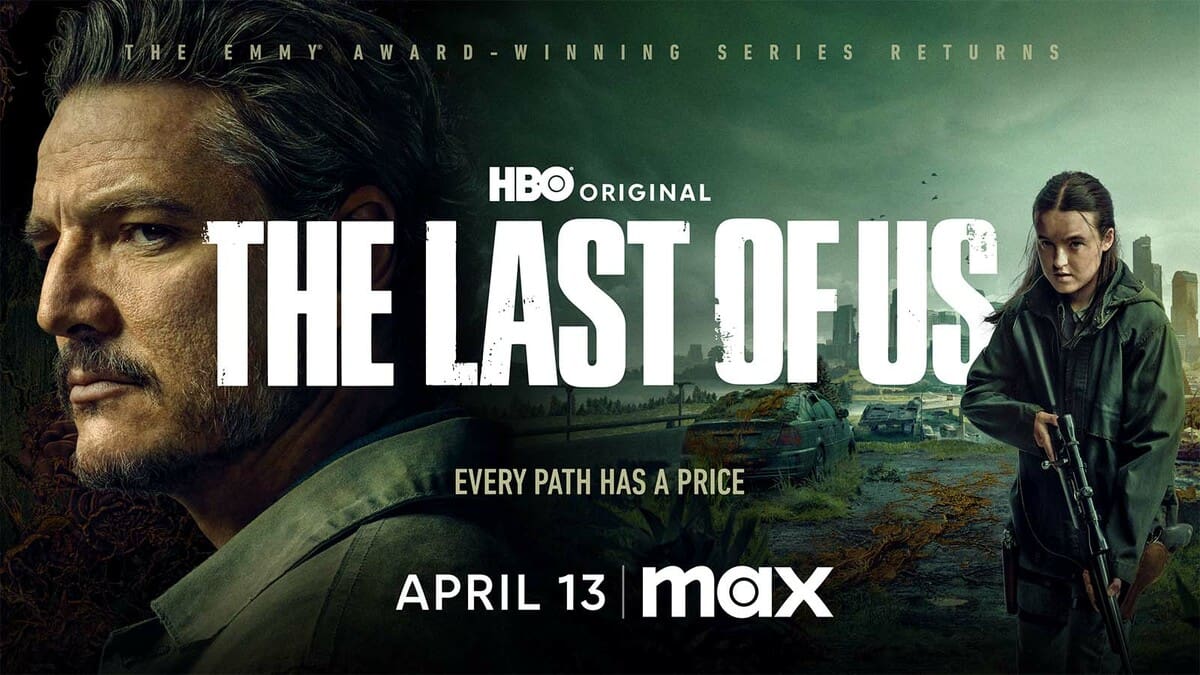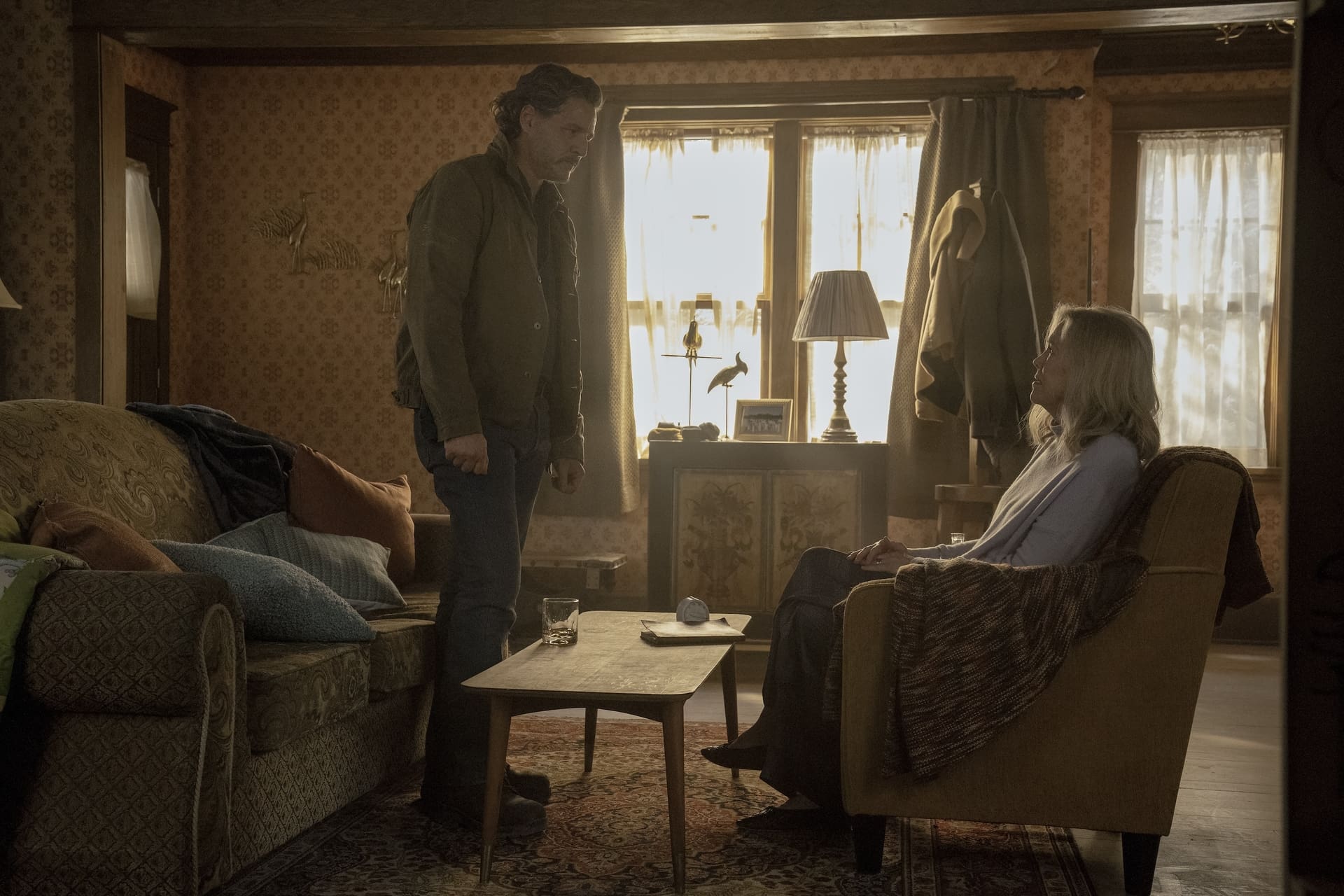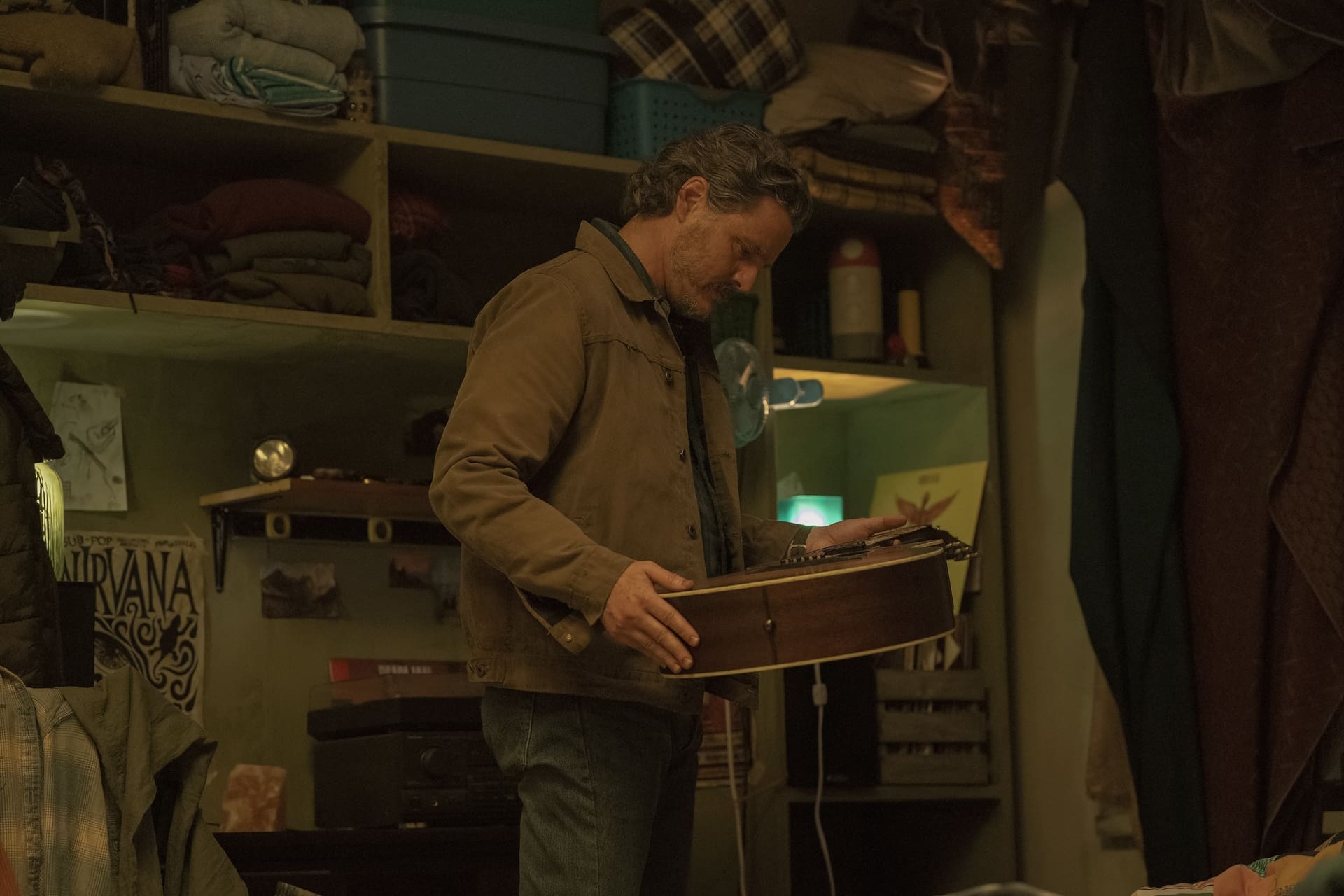
As an adaptation, HBO’s The Last Of Us is not obliged to follow every narrative beat to the letter, but there’s still an underlying truth to its drama that’s been taken from the games.
They can tinker with all sorts of details, and these little things add up to a lot. Whether Ellie walks up to Joel outside his cabin, as she does in the video game The Last Of Us Part II, or walks past it, like she does at the end of “Future Days,” is one small decision that adds up to a lot. However, the underlying truth of the show remains. The underlying truth of that moment can’t be said yet, because of those pesky things called “spoilers,” so here’s one that can be discussed.
In both the Season 2 premiere of The Last Of Us, titled “Future Days,” and the video game The Last Of Us Part II Joel (Pedro Pascal in the show, Troy Baker in the game) is asked “What’d you do?” Fans of The Last Of Us in both mediums know what Joel did. He did the same thing in both the Season 1 finale and the end of the first game. When the Fireflies decide to kill an unconscious Ellie to possibly salvage a cure, Joel mows down a small army to save her, and that’s his answer in both mediums: “I saved her.”

However, different characters ask it in different mediums, so the path from that same question, to that same answer, varies. Joel’s brother Tommy (Gabriel Luna in the show, Jeffrey Pierce in the game) asks the question in the video game, while his therapist, Gail (Catherine O’Hara, Beetlejuice Beetlejuice), asks it in the show. Tommy is Joel’s brother, so he tells Tommy about his trip across the country the way any of us might talk about a road trip to a sibling. When he gets to his answer, his delivery is like a drop of blood in clear water. Delicate, and undeniable. Gail, on the other hand, is both his therapist and an original character for the show, so there’s a unique vulnerability with both of those elements. There’s the vulnerability that anyone should feel when they go to their therapist, and the vulnerability for all fans, as we’ve never seen her before.
The path to the answer reflects another moment of vulnerability Joel faced in the show. It occurred in Season 1 Episode 6 — “Kin.” In the episode, Joel’s emotional path starts with him crying, but when Ellie brings up Joel’s late daughter Sarah, these tears give way to rage. It’s a rage that denies a truth he doesn’t want to face. When Gail asks Joel what he did, he initially cries, just like he did in “Kin,” and just like he did in “Kin,” these tears turn to rage. However, Joel’s rage here doesn’t deny the truth. In fact, he’s still crying as the stone cold rage overcomes him, because that rage is what it took to kill those Fireflies, and those tears are what it took to save Ellie. It’s because of this path, because of these little details that are tinkered with, these little things that add up to a lot, that the core truth of Joel as a character is maintained, and how this HBO adaptation gives that character new life.
Of course, while Joel told Tommy and Gail the truth, he lied to Ellie twice. He first lied when she woke up and he was driving them to their new home in Jackson that there was no cure. Right before they enter Jackson, Ellie asks Joel to swear that everything he said about the Fireflies was true, and so Joel lies a second time by swearing. This is another underlying element of both the show and the game: we don’t know if Ellie believes him, and this ambiguity will haunt “Future Days.”
However, before the lie, before the (in this critic’s opinion, justified) slaughter Joel enacted, before Joel and Ellie even speak to the Fireflies, they see a herd of giraffes. Having escaped from a long since abandoned zoo, this lovely scene captures the potential of new life in this world, and is a highlight of both the game and the show, and when the second season opens with an image of a giraffe, both fans of the games and fans of the show will associate this with the time before Joel and Ellie meet the Fireflies.
It’s when the show cuts to Abby (Kaitlyn Dever, Booksmart) crying that reactions will differ. Those who have only watched the show may ask “Why is she crying,” while those who have played the games may ask “Why is she crying now?” While both associate the giraffes with before Joel’s slaughter, fans of the game know that Abby’s tears are caused by Joel’s slaughter, and new fans learn why, mere moments after we see Abby for the first time. Though just a teenager, she was among the Fireflies when Joel went on his rampage, and when the show cuts to Abby and her friends Owen (Spencer Lord, Riverdale), Mel (Ariela Barer, Runaways), Nora (Tati Gabrielle, The 100) and Manny (Danny Ramirez, Captain America: Brave New World) standing by a graveyard for Fireflies, it is affirmed that we are seeing the aftermath.

The way this cut, from the giraffes to Abby crying, the cut from what we associate with before the event and after the event, makes for a dissonance, and suggests the show will play with the chronology of the events the The Last Of Us Part II did as a game. Part II, which will serve as the foundation for Seasons 2, 3, and 4, plays around with structure in simple, yet rich, ways. These force the player to reflect on different events, at different times, from different perspectives. Events that seem to have an obvious relation to a character are given devastating layers when we find out what that character was hiding from us, and everyone is hiding something. Abby, even if we know the broad strokes of her motives, is still hiding something. After all, she’s not just crying in this scene. Even when her friends placate her, affirming that they’ll eventually go after Joel, her rage still stands out when she says “slowly. When we kill him, we kill him slowly.” This is the same emotional path that Joel goes on twice. Tears, then rage. Here, though, it’s for the reasons Joel did in “Kin.” Not to affirm the truth, but to hide from it.
After a time jump of five years, we’re back at Jackson. Life is going well in this little, Americana-flavored Eden. It’s the kind of town you might see in a Western, just with electricity and the first sign that maybe humanity as a species can rebuild itself amongst the rubble. We see new characters, like Jesse (Young Mazino), Dina (Isabella Merced), all contributing to the greater good of the town in their own ways, while spending quality time with Joel and Ellie. Jesse manages patrols, which search the forests surrounding Jackson for infected, Joel is helping expand the infrastructure of the town, and Dina is helping with both. (Ellie, ever the violent rebel, tends to stick to the patrols.)
Jackson gives Joel and Ellie new things to live for, as well as new places to hide. Be it from someone like Abby, or themselves. There’s merit to the former, especially with Joel protecting Ellie. In the season finale, his last words to Marlene, his last kill, were “You’d just come after her.” Yet Joel’s scene with Gail stops him from becoming complacent, because if he’s complacent, then he’s hiding from himself. This is how his last words to Gail, those same words he said to Tommy in Part II, allow him to protect Ellie while still confronting the truth. Gail doesn’t know what Joel saved Ellie from, and in the world of The Last Of Us, there are a great many things to save a person from. She doesn’t know why he has to hide it, and she’s smart enough to know that these specifics remaining hidden is not accidental.
Gail also knows Joel is telling the truth, that Joel had saved Ellie, and from the firm, unchanging affirmation Joel gives her, Gail and we the viewers, know that Joel would do it all over again.

